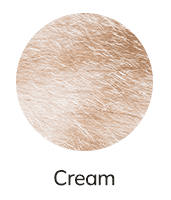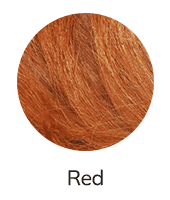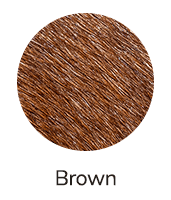Whoodle Breed: Your Complete Guide
A cross between the soft-coated wheaten terrier and the poodle, the whoodle is a designer dog breed. These playful and energetic poodle hybrids also go by many other names. You might’ve heard dog lovers refer to them as wheatendoodle, wheatenpoo, sweatenpoo, or sweatendoodle.
Whoodles are sweet-natured dogs that are affectionate and playful. One of the most recognizable traits of the whoodle is its non-shedding silky coat with a wavy or curly texture. This makes them the perfect furry friend for allergy sufferers, especially in smaller living spaces like apartments.
There is much more to cover about this designer breed as they carry some of the characteristics of both soft-coated terrier and poodle parents. This article will discuss everything about whoodles. Read on to learn about their size, temperament, energy levels, grooming needs, and more.
Quick Look at the Whoodle
Below is a quick look at the whoodle’s characteristics, from shedding levels to lifespan.
| Weight/Height | 20-50 pounds / 12-20 inches |
| Coat Type | Silky, medium-length, wavy/curly |
| Grooming Needs | |
| Shedding | |
| Temperament | Intelligent, affectionate, playful, energetic, active |
| Good With Kids | |
| Good With Other Animals | |
| Intelligence | |
| Easy to Train | |
| Energy Level | |
| Barking Habits | |
| Lifespan | 12-15 years |
What Is the History of Whoodles?
The whoodle’s history isn’t as rich as its wheaten terrier and poodle parents. Although the exact origins of this designer breed are unknown, the whoodle appeared around the mid-1900s, along with the other doodles. The whoodle became more popular when the demand increased for non-shedding, low-allergen dogs.
As for the whoodle parents, the poodle was bred to be a hunting dog, mainly for waterfowl hunting. The athletic capability of the breed and the thick hairs around its chest insulating organs from the cold made the poodle suitable for this type of hunting.
However, cynologists (scientists studying canines) debate where the breed originated. Some believe it was Germany’s water dog, while others state it’s France’s. Regardless, cynologists agree the poodle was originally bred for hunting. Despite its history indicating they were working dogs, the AKC categorizes the poodle in the non-sporting group.
The soft-coated wheaten terrier, on the other hand, is a terrier-type working dog. This dog breed was bred in the early 19th century in Ireland to watch and guard livestock, hunt vermin, and herd flocks of sheep. The first soft-coated wheaten terriers made their way to the US in the 1940s, and the AKC recognized the breed in 1973.
What Do Whoodles Look Like?





Whoodles have a silky, medium-length coat that’s curly or wavy. The whoodle’s luxurious coat is one of the first tells that separates it from other doodles. Many factors determine the coat color, but the poodle parent has the most significant influence.
While the soft-coated wheaten terriers typically have a cream, fawn, or red coat, the poodle comes in numerous colors. This gives the whoodle more variety than the soft-coated wheaten terrier parent, ranging from black and brown to cream and silver gray.
The coat can also be a combination of these colors, merle or tri-color. However, the most prominent whoodle color is cream. This coat color is also known as wheaten.
What Size Is a Whoodle?

The whoodle is a small to medium dog breed, but the exact size varies. Like the coat color, the poodle parent influences size. The soft-coated wheaten terrier is typically 17 to 19 inches tall and weighs 30 to 40 pounds. The poodle parent can be standard, miniature, or toy. Depending on the poodle parent, a whoodle can be small or quite big.
Typically, you can expect the adult size of a whoodle to be 12 to 20 inches in height and 20 to 50 pounds in weight. This variation in size makes them suitable for many individuals and families. Whether you want a small furry friend or one to give you fuller cuddles, there’s an appropriately-sized whoodle.
What Is a Whoodle’s Coat Type and Length?
One significant highlight of this poodle hybrid is its luxurious silky coat with a wavy or curly texture. They aren’t as curly as the poodle but typically have curlier hair than the soft-coated wheaten terrier. Whoodles don’t shed, but their lustrous coat requires daily brushing and combing to prevent matting – more on their grooming needs below.

What Is a Whoodles Temperament?
Whoodles are sweet-natured dogs that are highly intelligent and playful. They inherit these qualities from both parents, as soft-coated wheaten terriers and poodles are equally similar. Overall, the whoodle personality is a charming mix of fun-loving energy and gentle affection, which makes them a joy to live with for active families.
Whoodles, like many other doodles, are affectionate dogs that form strong bonds with their family. They love spending the whole day with their humans doing fun-filled activities. This dog breed thrives on human companionship and is generally friendly towards strangers and other dogs.
The playful nature of whoodles, with their high-energy levels, makes them need more daily exercise than the average dog. Long walks and letting them run loose in safe, spacious areas are the best ways to provide them with enough exercise.
However, it isn’t only physical activity that whoodles need. Their intelligence makes whoodles need a lot of mental stimulation. Interactive games and other activities that make them use their brain is essential to keep them healthy and fulfilled.
Are Whoodles Good With Kids?
Whoodles are patient dogs that do well with kids. As long as the children know how to respect the whoodle (i.e. not disturbing them while eating or pulling on their body parts), there shouldn’t be any problems.
A well-socialized whoodle will get along nicely with children of all ages. However, they pair the best with active children. You’d be amazed at how quickly kids and whoodles get tired just by playing fetch!
Are Whoodles Good With Other Animals?
Whoodles will happily wag their tail after seeing a friendly dog. They are very approachable dogs that don’t have the instincts to be wary of other dogs. If you have a cat, keep your whoodle on a leash while allowing the cat to roam free. Reward calm behavior and let them get to know each other slowly.
While whoodles typically do well with cats, the terrier inside may kick in after spotting small animals. It’s critical to make a proper introduction if you have small pets other than dogs and cats in the family, such as Guinea pigs or hamsters. Consider keeping small animals away in a place inaccessible for the whoodle if they have the urge to chase them.
Are Whoodles Aggressive?
Whoodles are good-natured dogs that don’t have aggressive tendencies. They are calm and friendly towards people and other pets.
However, that’s assuming they are well-socialized. An under-socialized whoodle may not have the necessary coping skills to respond to certain situations and stimuli. For example, a whoodle may display territorial behavior and growl when another dog approaches their food or favorite toy.
Early socialization is key to preventing aggression, as with any other dog breed. If this is overlooked, a whoodle may snap, growl, and display other signs of aggressive behavior. Nonetheless, whoodles aren’t aggressive dogs and are easier to socialize than many other dog breeds.
Do Whoodles Bark?
Whoodles rarely bark, and when they do, there is a good reason for it. They are minimal barkers and aren’t particularly vocal dogs, like Siberian huskies or chihuahuas.
While it isn’t expected for a whoodle to bark too much, they may do so when experiencing anxiety or boredom. Whoodle owners should provide enough attention to their dogs to ensure they don’t react by barking excessively at other people, dogs, and noises.
Overall, you can expect whoodles to bark less than the average dog. This trait makes them ideal for anyone wanting a quiet dog, especially if living in an apartment with noise restrictions.
Are Whoodles Affectionate?
Whoodles are such cuddle buddies and love receiving pets and any form of affection from their humans. Their social personality makes them warm up to strangers and other dogs fast, making them one of the friendliest dog breeds.
Despite their affectionate nature, whoodles aren’t known to be particularly clingy. If you have errands to run around the house, a whoodle isn’t likely to follow you everywhere.
Are Whoodles Intelligent?
Whoodles are incredibly intelligent dogs that absorb training like a sponge. They are quick to learn new tricks and understand human gestures and emotions well.
Whoodles are certainly smarter than the average canine, but their cleverness also means they require frequent mental stimulation. They may get bored if they don’t get to use their brains enough. This can quickly turn into destructive behavior.
With intelligent dogs like the whoodle, consider introducing interactive games to use their heads, such as hide and seek or puzzles.
Are Whoodles Energetic?
Whoodles are energetic dogs that require daily walks and regular exercise to keep them healthy and happy. Depending on their size, it can take more time to tire a whoodle. Long walks, games of fetch, hiking, and swimming are appropriate activities that tire most whoodles sufficiently for the day.
The best way to tire dog breeds with high intelligence and energy is to introduce them to dog sports. Some of the best dog sports for whoodles are rally obedience, flyball, scent work, and agility training.
Are Whoodles Easy to Train?
Whoodles are easier to train than most dogs with their high intelligence. They can learn complex tricks, like playing dead and retrieving specific objects. However, they may be headstrong at times and look for alternative ways to get what they want.
As with all dogs, the whoodle responds best to positive reinforcement. Some whoodles are motivated by treats, some love praise and attention, others find a quick game of tug as the best reward. Once you know what a whoodle likes, teaching them appropriate behaviors and new tricks should be a breeze.
Are Whoodles Good Watchdogs?
The whoodle barks minimally and doesn’t have the inclination to guard their territory or family intensely.
These traits don’t make this breed an impressive watchdog. They may alert their owners by barking upon seeing something strange, but individual dogs may vary. While one whoodle may react to someone nearing the yard by barking, another may simply stare.
Are Whoodles Good Service Dogs?
Whoodles can be amazing service dogs. They can uphold many duties appropriate for their size. They won’t make great mobility assistance or seizure response dogs, but they can become excelling hearing dogs, PTSD service dogs, or psychiatric service dogs.
Additionally, the whoodle makes an incredible ESA and therapy dog. The non-shedding coat, paired with their affectionate nature, makes them the perfect cuddle buddy, ready to comfort you at any moment.

How to Care for a Whoodle?
Whoodles need attention and care from their owners to live a happy and healthy life. Like any dog breed, they require regular potty breaks and vet visits, a high-quality diet appropriate for their weight and energy level, daily walks, enriching activities, and so on.
In particular with the breed, they need plenty of daily exercise and mental stimulation. You should spare at least an hour for walks and playtime – the longer, the better.
A tired whoodle is a happy whoodle. You won’t have any problems with unwanted behaviors when provided with enough exercise and mental stimulation. These will make caring for a whoodle easier overall, which will also strengthen the bond between the dog and the owner.
Do You Need to Groom a Whoodle?
Don’t let the non-shedding coat fool you. Although you won’t need to use a deshedding brush or clean your home often, whoodles require daily brushing. Whether they have a wavy or curly coat, daily brushing and combing is a must to prevent matting and keep their lustrous appearance.
Also, haircuts are essential for whoodles. Once every two to three months, you will need to schedule an appointment with a professional groomer or learn how to groom your dog.
Do Whoodles Shed?
Whoodles are considered hypoallergenic dogs. Since they don’t have an undercoat, whoodles don’t shed. There will be strands of hair falling from their coat, but it won’t be any different than our hair.
If you’re allergic to pets, their hypoallergenic coat will make them the perfect dog breed for you. Since whoodles produce much less dander than a non-hypoallergenic dog, their presence will be easier on your allergies.
In addition to allergy sufferers, a hypoallergenic dog like the whoodle can be a consideration for those living in a small apartment.
What Health Problems Do Whoodles Have?
Whoodles are generally a healthy dog breed. However, they are still prone to a few health issues, such as:
- Ear infections
- Eye infections
- Cataracts
- Kidney diseases
- Addison disease
- Retinal atrophy
With regular vet visits and proper care, a whoodle won’t display symptoms of the above health issues or other common canine diseases in the earlier stages of their life. Make sure to take your dog for regular vet visits for physical checkups and consult your veterinarian if a whoodle develops any health issues.
How Long Do Whoodles Live?
The lifespan of a dog depends on various factors, such as genetics, size, care, and environmental factors. Still, the Whoodle lifespan reflects that the Whoodle is a healthy dog breed with an average lifespan between 12 and 15 years.
What Should a Whoodle Eat?
How much a whoodle should eat depends on the size. Smaller whoodles need less and larger ones more food. However, you can expect a whoodle to eat a bit more than a similarly-sized dog with lower energy levels. As high-energy dogs, whoodles require more calories to replenish their bodies and keep their energy levels balanced.
As for what to feed a whoodle, there isn’t a one-size-fits-all that works for every dog. It’s best to ask your vet for food recommendations. Besides dog food and commercial treats, you can give a whoodle fruit, vegetables, peanut butter, cheese, and other appropriate foods as treats in small quantities.
Is a Whoodle the Right Dog for Me?
The whoodle can be the perfect dog for you and your family if you have pet allergies and want an affectionate dog ready to get on your lap for cuddles. They come in various colors and sizes, and you can be sure to find an appropriately-sized whoodle for your preferences.
Also, they are fairly quiet dogs that bark minimally. Coupled with their non-shedding coat and size, it makes the breed perfect for apartment living.
While these are excellent, other traits of the whoodle make them unfit for some. They need a lot of daily exercise and playtime to stay physically fit and happy. The silky coat also requires daily grooming to prevent matting.
These can be demanding for some, especially if you have a busy schedule. Fitting in enough time to care for a relatively high-maintenance dog like the whoodle isn’t an option for everyone.
Ultimately, determining whether or not a dog breed is right for you requires careful consideration of your life circumstances and the breed’s characteristics. Make sure to look at the points covered in this article to make an informed decision.